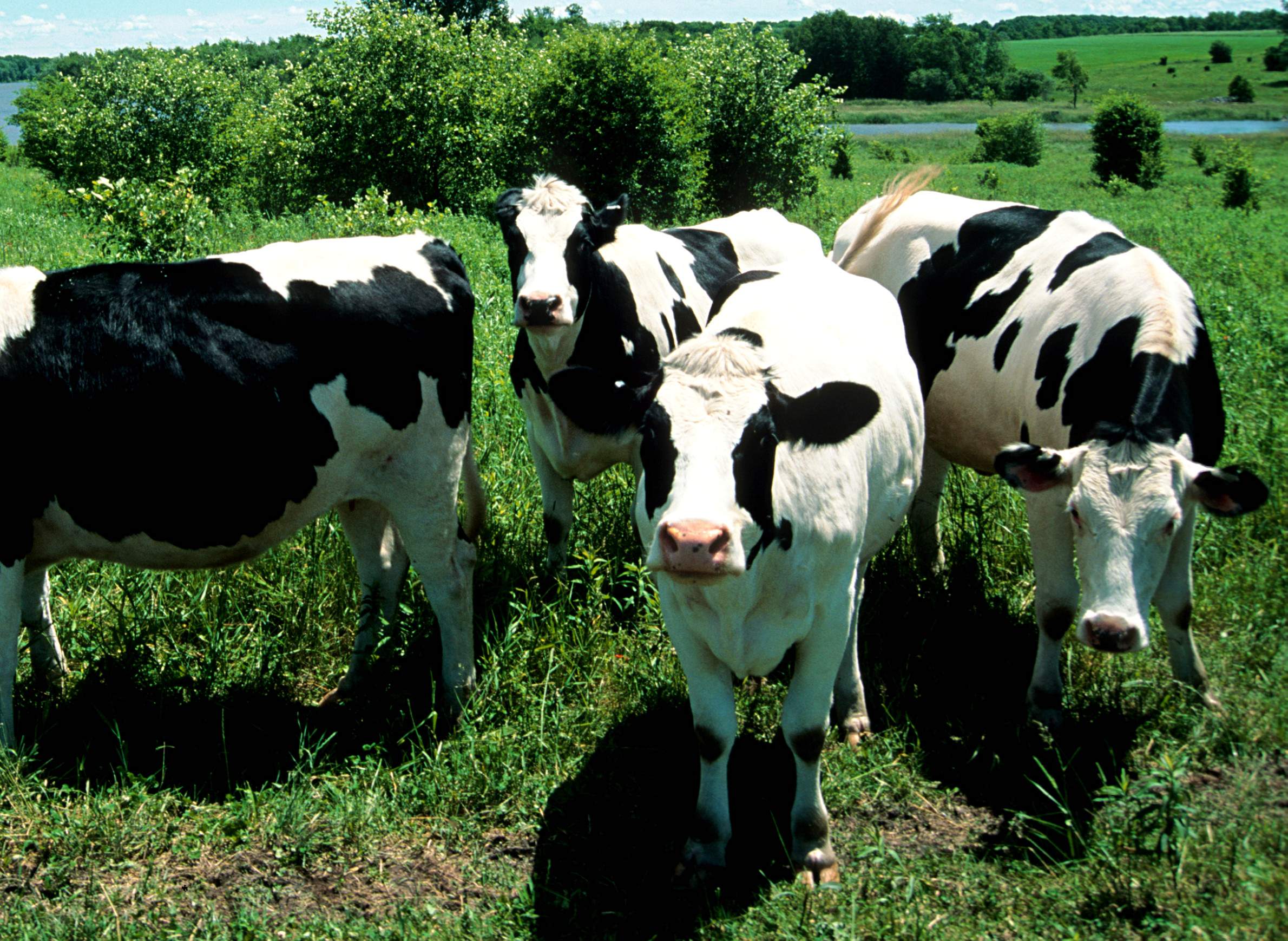
Wisconsin's Decisive Shift Towards The Dairy Cow

Wisconsin's popular identity owes quite a bit to cows, their milk and culinary staples like cheese and ice cream. But how did the dairy industry influence the state's culture more broadly, in terms of agricultural and environmental values?
In Wisconsin's early years, farmers worked the soil directly, cultivating enough wheat that the state was the second biggest producer on the eve of the Civil War. But the work of early dairy farmers was inherently different, as they cared for living creatures.
The responsibilities associated with raising animals is the very reason that led to the dairy industry's success, asserted author Ed Janus in his 2011 book Creating Dairyland: How Cows Made Wisconsin. In other words, the success of a dairy farm was and remains dependent on how cows are treated. He discussed this factor and others that contributed to the state's contemporary dairy industry in an August 17, 2011 lecture recorded for Wisconsin Public Television's University Place.
"One of the things that the dairy leaders were selling was contentment," Janus said. "They were trying to get farmers … to sell the cow as a way of bringing a sort of a spiritual aspect to life."
Once Wisconsin farmers started embracing dairy in the late 19th century, they started seeing both improvements to their lives, said Janus. The nature of the dairy industry required farmers to care for their animals, but it also allowed for scientific measurement to determine how and why specific cows were healthy, and therefore producing well. Dairy farmers measured the productivity of each cow using the Babcock test, increasing control over their success, said Janus. In turn, this control empowered farmers to improve their own lives and well-being.
"I like to say that this is a revolution in rural history," said Janus … "The dairy movement sought by making farmers prosperous to usher them into the middle-class."
In the early days of the state's dairy industry during the late nineteenth century, farmers began taking on a larger moral responsibility, too – a way of thinking that many farmers continue to embody.
"Our farmers in Wisconsin became dedicated to providing protein to the world. So, I like to say that caring became the new morality for farmers," Janus said, noting that many people around the world have struggled to feed themselves.
When Wisconsin farmers began taking on this larger mission, advocates sought to regulate the dairy industry out of health and safety concerns for milk's consumers. At the same time, leaders in the Progressive movement looked to improve the lives of those producing food. To them, the rhythms of dairy farming did just that.
"A comfortable cow was good for business, a comfortable cow was good for your soul."
Key facts
- Wisconsin's dairy industry emerged rapidly between 1880 and 1920. By 1927, milk accounted for half of the income earned by Wisconsin's farms.
- In the late nineteenth century, milk was one of the most dangerous foods on earth due to lack of refrigeration and the expense of having clean, certified milk. With the increasing adoption of pasteurization in the 20th century, milk spoiled more slowly and became less likely to make people ill.
- The invention of the silo was transformational in the early dairy industry, because they allowed for cows to be fed and consequently produce milk year round, instead of only during the spring, summer and fall. Silos extended cows feeding and production period through the winter, and created the year round cycle of the dairy industry.
- William Dempster Hoard, who was governor of Wisconsin from 1889-1893, was oftentimes called the "cow governor." He sought to educate dairy farmers and encourage them to use new technology and rigorous metrics in their industry, rather than simply relying on instincts and habits.
- In 1900, a cow produced about 4,000 pounds of milk a year. In the early 21st century, a cow can produce up to 30,000 pounds of milk a year.
Key quotes
- On the origins of the dairy industry based on the idea of looking forward: "It repudiated a European past and it created an American agriculture. And in some ways, it created a quintessentially Wisconsin agriculture."
- On the exploitation of soil from early wheat farming: "What happens with wheat is you cut it down and you ship it to New York or you ship it to England, and you ship all the nutrients with it. Nothing gets put back into the soil. So pretty quickly people realized that we were mining the soil, they called it. We were exploiting."
- On the importance of learning to care for a dairy cow: "I like to say that calves are the spiritual and economic foundation of dairying. Falling in love with cattle is something that happens on every dairy farm in Wisconsin, probably every dairy farm everywhere. Especially among the children. And it is really the foundation. This caring, learning to care at a very young age for another living dependent being was all part of the dairy program."
- On caring for dairy cows: "During the 160 years since dairy cows began to reshape Wisconsin's landscape, economics, moral ethic and way of life, many thousands of men and women have been initiated into a kind of faith, faith that care of the cow and the soil would bring them prosperity, even happiness."
- On the development of the cheese industry due to the use of silos and year round nature of dairy: "Having a cheese industry made all the difference. It started putting money in farmers’ pockets, making them convert completely to dairying."


